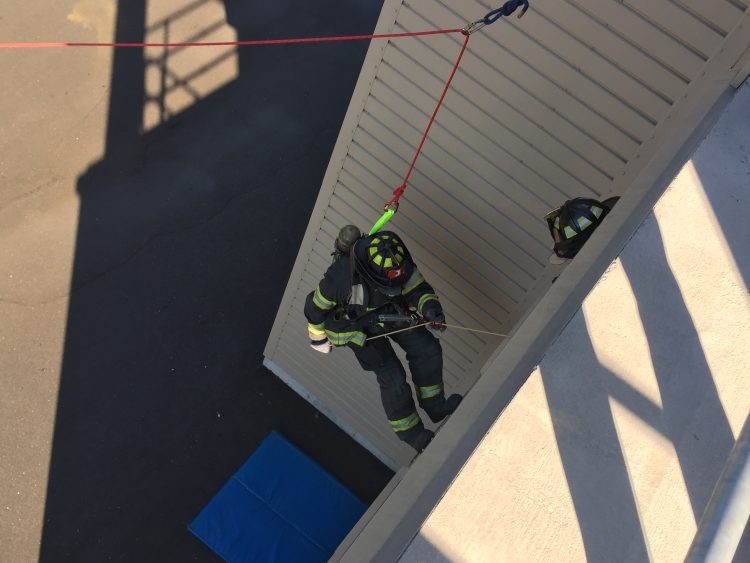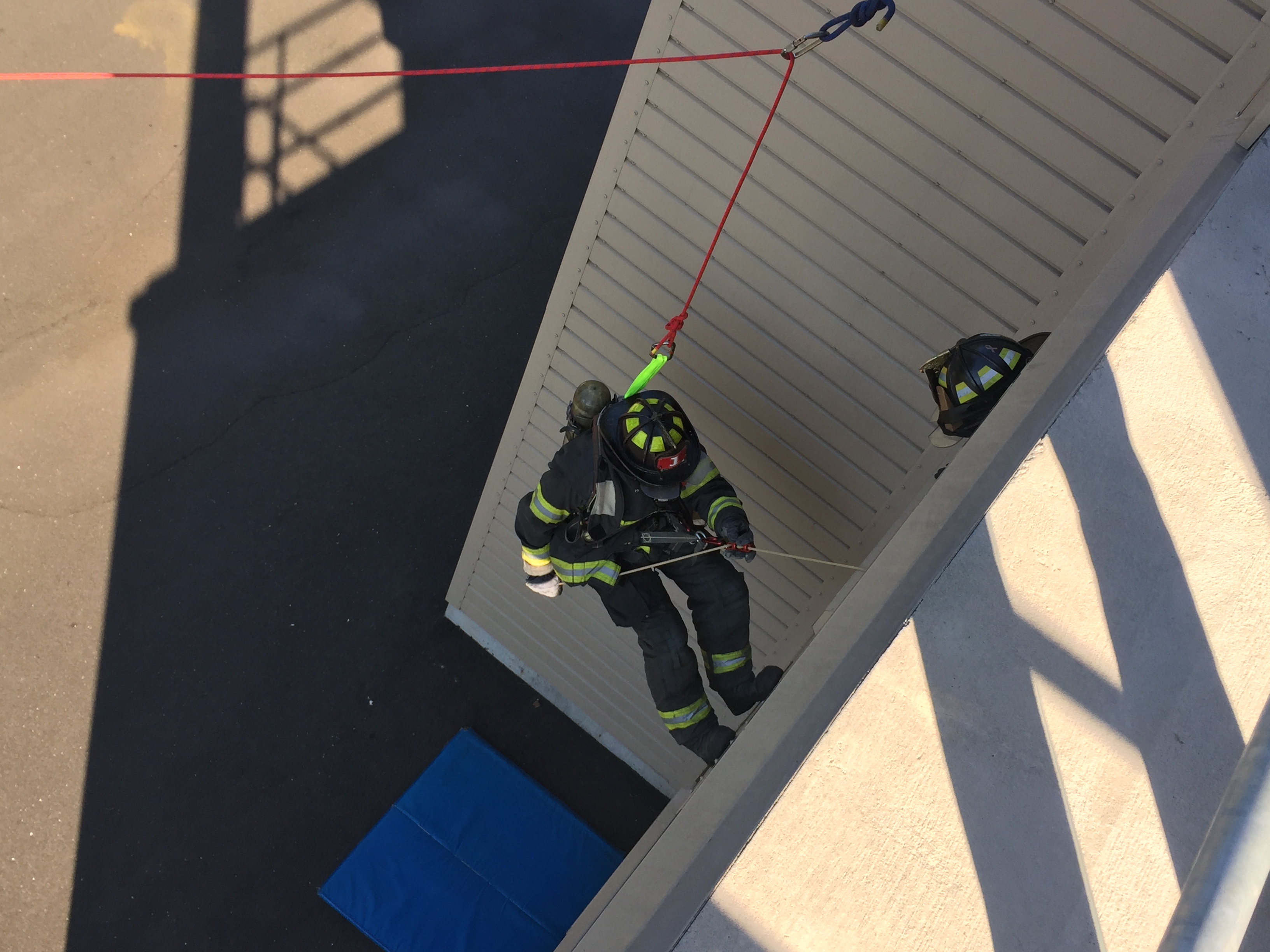

By Richard Kaufman
Sentinel Reporter
Back in 2003 on a snowy December day, the Greenwich Fire Department responded to a fire in a multi-family home on Davis Avenue.
While searching a third floor apartment for two children who were reported to be inside the building, three firefighters became trapped by the advancing flames and were forced to jump to safety. Two of the three firefighters landed on the pavement below and one hung outside the window before eventually falling.
The firemen all survived but were left seriously injured. The missing children ended up not being in the building because they were visiting relatives out of town.
The incident was the catalyst for some changes within the GFD. Most notably, it lead to the acquisition and implementation of new equipment to prevent such instances from happening again.
Firefighters will now be equipped with “bail-out kits.” The new gear includes a compact and lightweight 50-foot rope system that is a part of a firefighter’s ensemble. It’s designed to allow a firefighter to escape out of a window and safely lower themselves to the ground immediately if fire conditions rapidly change.
After going through several hours of classroom training, firefighters trained with the new equipment back on Oct. 6 at their Fire Training Center off North Street.
Each firefighter conducted nine jumps in sets of three under different conditions — each gradually getting more difficult. They did three jumps wearing regular gear, three wearing an air-pack with face mask, and three wearing a mask covering the face to simulate black-out conditions in heavy smoke with no visibility.
Firefighters deployed the kit and attached a hook either to the window sill or another structure inside the building for stability. They then walked along the rope towards the window and plunged outward head first. Once outside the building and dangling hands free thanks to an auto-lock feature on their harness, they were able to lower themselves slowly to the ground.
Although it was a cool 65-degree morning, each firefighter was visibly exhausted and perspiring heavily.
“You get beat up pretty good,” said Deputy Chief, Larry Roberts, who pointed to some bruises he suffered as a result of the training.
Once the career firefighters are fully trained, volunteers will get the equipment as well. Overall, the department conducted nearly 500 jumps with the gear at their training facility.
“We’re just trying to build that muscle memory and make sure that when it comes to an emergency, it’s second nature and [the firefighters] can jump right out the window and get down,” Roberts said.
It took two-and-a-half years for the department to get the bail-out kits. The department established a committee that tested 13 different systems before settling on the Sterling F-4, which is manufactured in Portland, Maine.
“We chose this one because it’s compact, high-quality, it fit well and the price point was there, too,” Roberts said.
Lieutenant Ryan Brainerd, a 19-year veteran of the GFD, helped train firefighters last week. He said he’s happy to have a new safety feature to use on the job.
“As far as firefighter safety, it’s phenomenal just having that option,” Brainerd said. He noted that because fire service nationwide is suffering from manpower shortage, this equipment enables firefighters to make it out of a building if a second company hasn’t arrived to provide ladder support.
Brainerd also said repetition is key in order to get comfortable with the gear.
“It’s having faith in your equipment,” he said. “It’s apprehensive to go head first out of a window. It’s not the natural human condition.”
Every year, the firefighters will have to do another four jumps to re-certify themselves to use the equipment. On a monthly basis, the kits will be serviced. They have a 10-year lifespan with traditional use, and if they’re used in an emergency, they’re taken out of service and replaced.
The kits have been in use for a while in other departments according to Roberts, and have become a state law in New York. Brainerd pointed out a case in Oregon recently where firefighters used a similar system to rescue a civilian from a second floor window.
Down the road, firefighters will learn more advanced techniques, such as using the rope and harness to rescue others. The minimum breaking strength on the rope is 4,391 pounds. For now, the GFD is focused on the basic training.
“My hope is that we never have to use [the bail-out kits], but if we do, they’ll have them there and they can make it out safely,” Roberts said.




